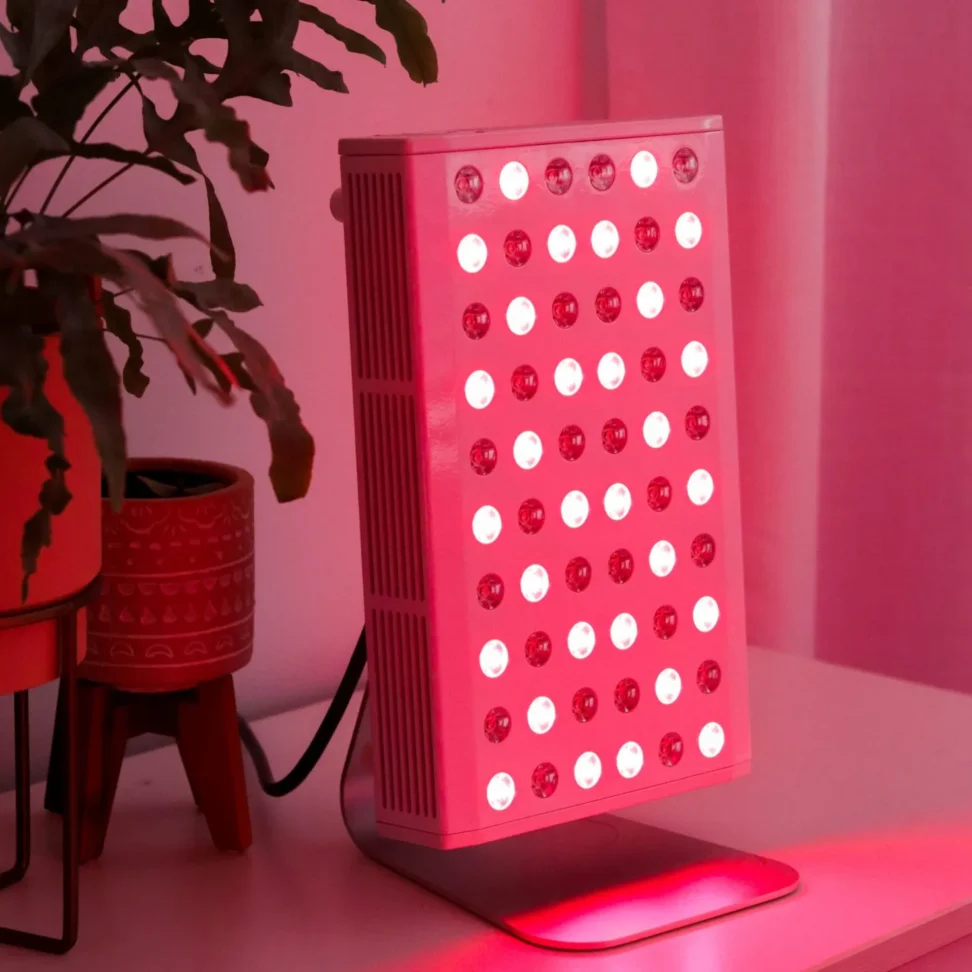Once upon a time, an engineer designed a system for growing plants in space. This engineer, named Ron Ignatius, received funning from NASA to tackle this problem in the 1980s. This system helped grow potatoes on a 1995 space shuttle, but something interesting happened during the development of this plant-growing red light system.
Quoting from, NASA Research Illuminates Medical Uses of Light, “NASA scientists who spent time working with their hands under the lighting found that abrasions on their hands seemed to heal faster than normal.”
From there, Ron and NASA and others chased the research. “Through experimentation, the researchers showed that high-intensity red and near-infrared LEDs significantly accelerated the healing of oxygen-deprived wounds in rats and also sped the growth and proliferation of skin, bone, and muscle cell cultures from mice and rats. The team supplied LED devices to U.S. Navy crews for treatment of training injuries. These produced more than a 40 percent greater improvement in musculoskeletal injuries and a 50 percent faster healing time for lacerations, compared to control groups.”
Today, the growing perspective about this therapy, backed by ongoing research, is “that red light treated many afflictions because it improved overall cell function by stimulating the mitochondria that drive metabolism in animal cells. This would accelerate cell production and relieve oxidative stress, a factor that causes inflammation and symptoms of aging and ultimately contributes to diabetes, cancer, neurodegenerative diseases, and other illnesses.” (Quotation from NASA Research Illuminates Medical Uses of Light.)
A Helpful Tool with Few Downsides
For people who are in pain or struggling with fatigue, low energy, and inflammation, they can try helpful lifestyle options, like eating a low-inflammation diet, taking turmeric, and exercising. Many people find that when they do all these things together with the addition of red light therapy, they see more physical benefits, like reduction of inflammation and pain sooner.
Another beneficial attribute of red light therapy is that it has few side effects. (Pregnant women and those with “a condition with photosensitivity like lupus or who are on medications that make them photosensitive shouldn’t use red light therapy … ,” says Dr. Debra Jaliman MD.) Otherwise, few people have issues with this type of therapy, according to this 2024 Forbes article, which includes a list of benefits.
For example, red-light therapy can help with:
· Fine lines and wrinkles
· Acne
· Scarring
· Wound healing
· Hair growth
· Relief from Chronic Disease Symptoms/Reduction of Pain
· Acceleration of Sports Recovery, and Injury Prevention
· Promotion of Brain Health
Additionally, you might recall that in a previous blog, What is IBS?, I listed far infrared light therapy as an additional tool for IBS/pain management. To illustrate that point, this women’s story of trying red light therapy shows how it can be beneficial. She writes that, “While it didn’t help alone, it seemed to finally help tip me over into a healing phase and spasms in my back seemed to subside to the point where I could walk again. And with that, my bowels also relaxed and my IBS flare resolved.”
It’s always important to talk with your practitioner before trying red light therapy, and as always follow instructions, including using eye protection. I personally started using red light to help with my neck. Each morning, I sit with my back to the light, setting it up on a desk and pulling up a chair. I sit for about 15 minutes, and I’ll just relax. I’ve added this red light therapy to my daily routine because I have Ehlers-Danlos syndrome (EDS), which affects joints and
connecting tissues; and I’m hoping to maintain the function of my neck, reduce neck pain, inflammation, and migraines — while avoiding surgery.
From Astronauts to Professional Athletes to Everyday People
As you can see, the use of red light has moved beyond its early days at NASA. Research continues to study when is (not if) the best time to use this therapy — before or after working out.
Everyday publications, like The Wall Street Journal, are diving into the discussion, including its recent article Elite Athletes Swear by These Extreme Treatments. Scientists Think They Could Boost Your Health, Too. Similarly, this ABC Action News video summarizes the background and some benefits of this therapy, including the connection to helping manage depression. Another news piece covered how red light has been linked to the reduction of jet lag.
And, sleep support is another benefit that has come up in research. “A study in the Journal of Athletic Training found that 30 minutes of red-light exposure improved sleep and melatonin levels. Some other research suggests that red light therapy at night may also help you wake up more alert and ready for the day. A study in the Journal of Nature and Science of Sleep found that red lights prevented ‘sleep inertia.’ That’s the feeling of grogginess some people experience when they first wake up after sleeping,” quote from Why People Who Can’t Sleep Are Trying Red Light Therapy.
I hope this blog brings some additional insight on how red light might be a good fit for your health routine. As always, talk with your health practitioner before starting any new therapy.



![z31[1]](https://simplywholebydevi.com/wp-content/uploads/2018/06/z311-100x100.jpg)












